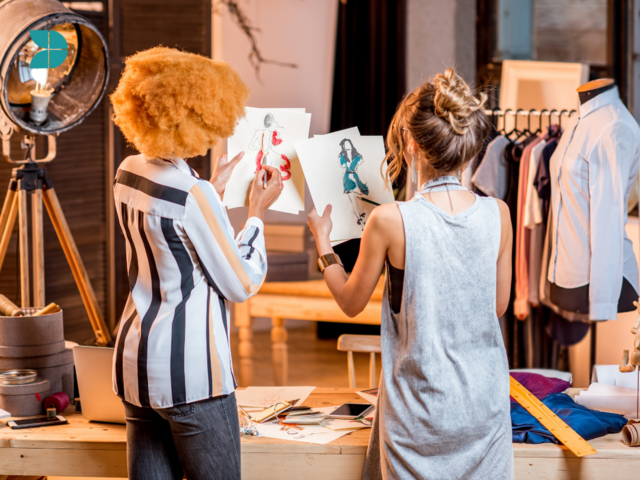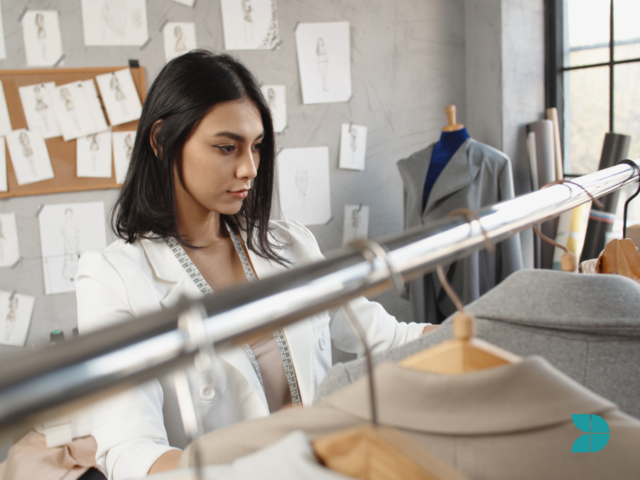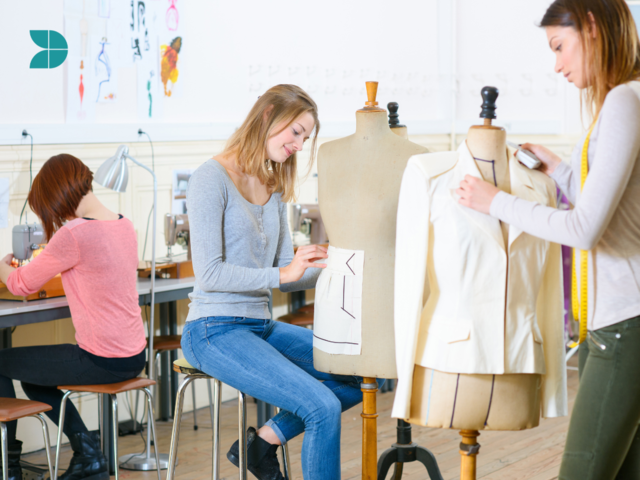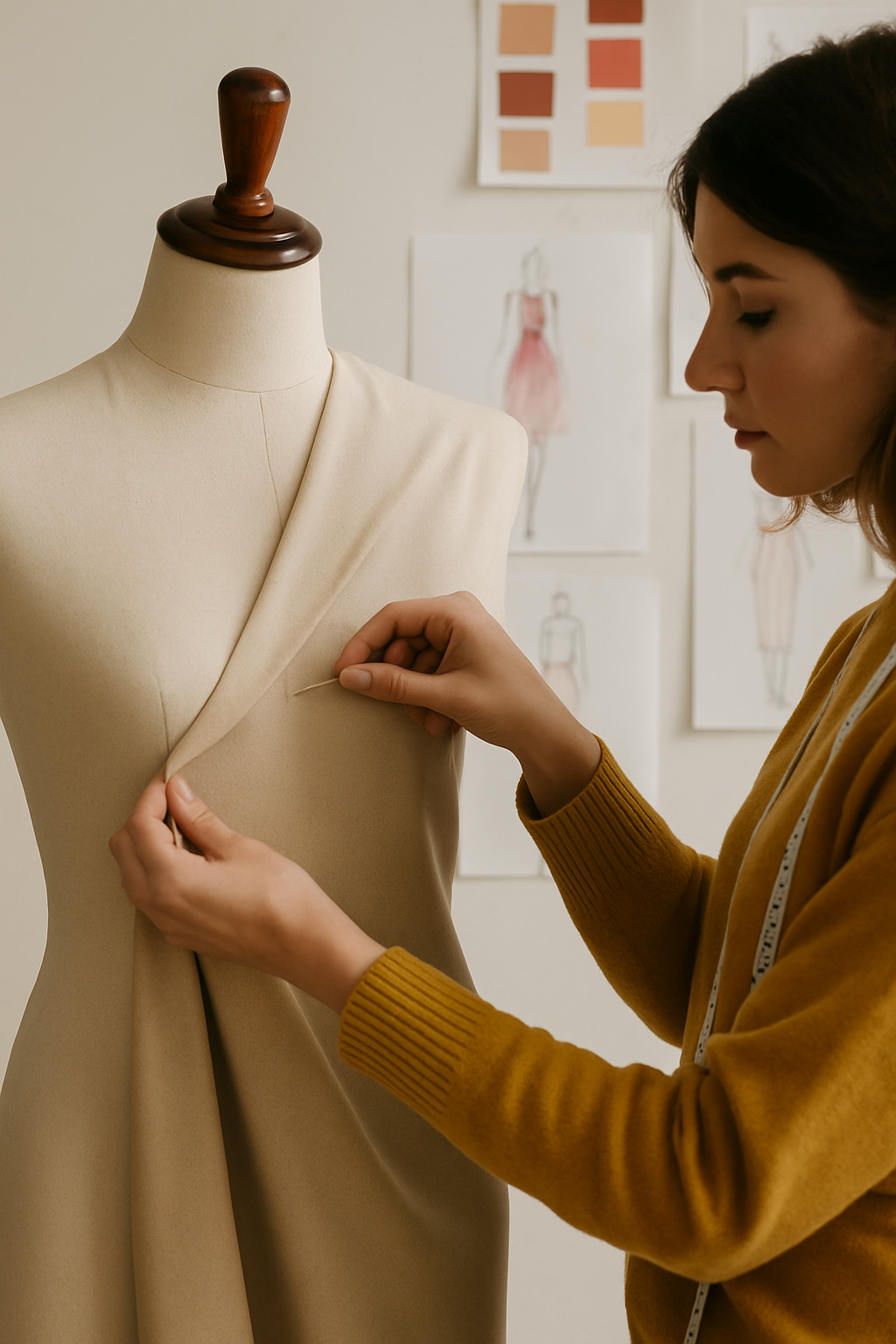The very definition of art is creativity, innovation and imagination. An artist uses their craft to express themself and to communicate their story and it is through art that the human condition is shared. Art will challenge the norms and push the boundaries of convention and through it all, it can elicit joy, intrigue, shock and a sense of belonging. All of this, every stitch of it, also applies to fashion. In short, a fashion designer is an artist and an artist can of course, be a fashion designer. Here’s how:

1. Transferable skills:
Like a sculptor, painter or photographer, a fashion designer must take an idea from their imagination and make it a reality and the same fundamental principles of design exist across all of these disciplines. Both fine art and fashion graduates will have spent a lot of time experimenting with, and learning about colour, texture and form. Drawing can also be a large part of fashion design including the use of composition and balance. It is simply a case of taking what you know as an artist, and applying it to fashion.
2. Creative Expression:
Since the dawn of time there have been art movements breaking down barriers, pushing boundaries, and speaking the unspeakable. From Renaissance to PopArt and from Baroque to Dada, social and cultural shifts have been reflected and challenged in the arts. And fashion is no exception. Designers like Vivienne Westwood barrelled into the 1970’s with her uniquely punk style and today, fashion is proudly representing gender neutral, LGBTQ+ and sustainable upcycled clothing. Fashion has always been a steadfast ally to the creative conversation and doesn’t have any intention of stopping.
3. Material Innovation:
The very nature of art is a journey of exploration and discovery. Artists are constantly searching for new ways to express themselves through an infinite range of mediums. Technology goes hand-in-hand with the evolutionary nature of the arts and through tech comes new materials. Think of Iris van Herpen’s use of 3D printing or the pleated folds of Issey Miyake. Designers will always innovate as they create. When synthetic fabrics first arrived, the fashion industry embraced these versatile and affordable options but today, with a better understanding of the perils of these materials, designers are embracing more sustainable and eco-friendly options.
4. Collaboration in the Arts:
It is not uncommon for a fine art student to get involved in group projects where they will collaborate with other creatives. This experience and the lessons learned from sharing a creative process provide graduates with valuable skills that are of great benefit in the fashion industry. But these skills are not the only benefit. We have also seen what happens when fashion meets art. There are stunning collaborations like Yves Saint Laurent's Mondrian dress, Louis Vuitton's work with contemporary artists like Takashi Murakami, or Alexander McQueen's partnership with Damien Hirst.
5. Global Artistic Perspective:
An education in fine art teaches more than just painting and drawing, it is an introduction to the different cultural, social and traditional perspectives of the wider world. Fashion is a universally utilised medium and an insight into the vast tapestry of the human race can only benefit a designer's imagination. Fashion is fusion and many designers will incorporate their global inspiration into their collections. Think John Galliano and Dries Van Noten. By learning about the world at large, an artist can make it all the more accessible.

Transitioning from Fine Arts to Fashion Design:
Moving into any speciality field will have its challenges, but the shift from fine art to fashion design may not be as troublesome as an artist may think. Here are some ways to make the journey easier:
1. Develop a Knowledge of Fashion:
Make it your business to learn as much as possible about fashion history, cultural movements in fashion and to familiarise yourself with contemporary movers and shakers. This is a vital step in contextualising your artistic approach.
2. Skill Development:
There will be many skills and techniques that you will have picked up as an artist, but there are some that are specific to fashion. Sketching is a strong start but a designer must have a hands-on understanding of pattern-making, draping, and sewing. It is only through knowing these skills that a designer can truly understand the entire design process.
3. Portfolio Development:
Just like in fine art, your portfolio is a means to showcase your talent and your skills. Curate a fashion portfolio to demonstrate your design style, your perspective and your ethos. It is a calling card for potential employment and should represent your best work.
4. Ongoing Education:
In order to arm yourself with the skills and knowledge needed to transition from fine art to fashion, consider enrolling in a fashion design course. You will arrive with many of the fundamental creative skills already in your armoury, but there is a lot to be learned from hands-on experience, and a focussed education.
5. Networking:
If you want to work in fashion, you will need to live in fashion. Go to fashion shows, events, workshops. Work as an intern or join forces with other aspiring designers. Put yourself out there in the fashion community and make sure you connect with other like minded designers.

Why Should You Take Our Fashion Design Courses?
If you're a fine art graduate thinking about a career in fashion, our academy has a suite of fashion design courses designed to harness your artistic ability for the fashion business. Here are some of the reasons why you should consider us:
1. Comprehensive Curriculum:
Our courses take a comprehensive approach, covering the history of fashion, textiles, garments, and trends as well as the skills and techniques needed to create new designs. You will not only master the fundamentals, but you will also explore the intricacies of fashion design and other design topics.
2. Industry Experts:
Learn from the best in the industry. Our tutors are professional fashion designers with years of expertise and personal experience. Their advice, support, and mentoring will guide you as you navigate the ever-evolving world of fashion.
3. Placement Opportunities:
With partnerships with prominent fashion businesses, our graduates can avail of work placements, getting a foot in the door right away.
4. …plus we offer different flexible study modes.
If you are curious to know more about the benefits of our courses, contact us now or schedule a call with one of our course advisors.
The transition from the arts to fashion is not only conceivable but also extremely rewarding. With the world increasingly recognising interdisciplinary talents, this is the perfect time to spread your creative wings and see where your fashion path may take you.


Comments
I love your courses